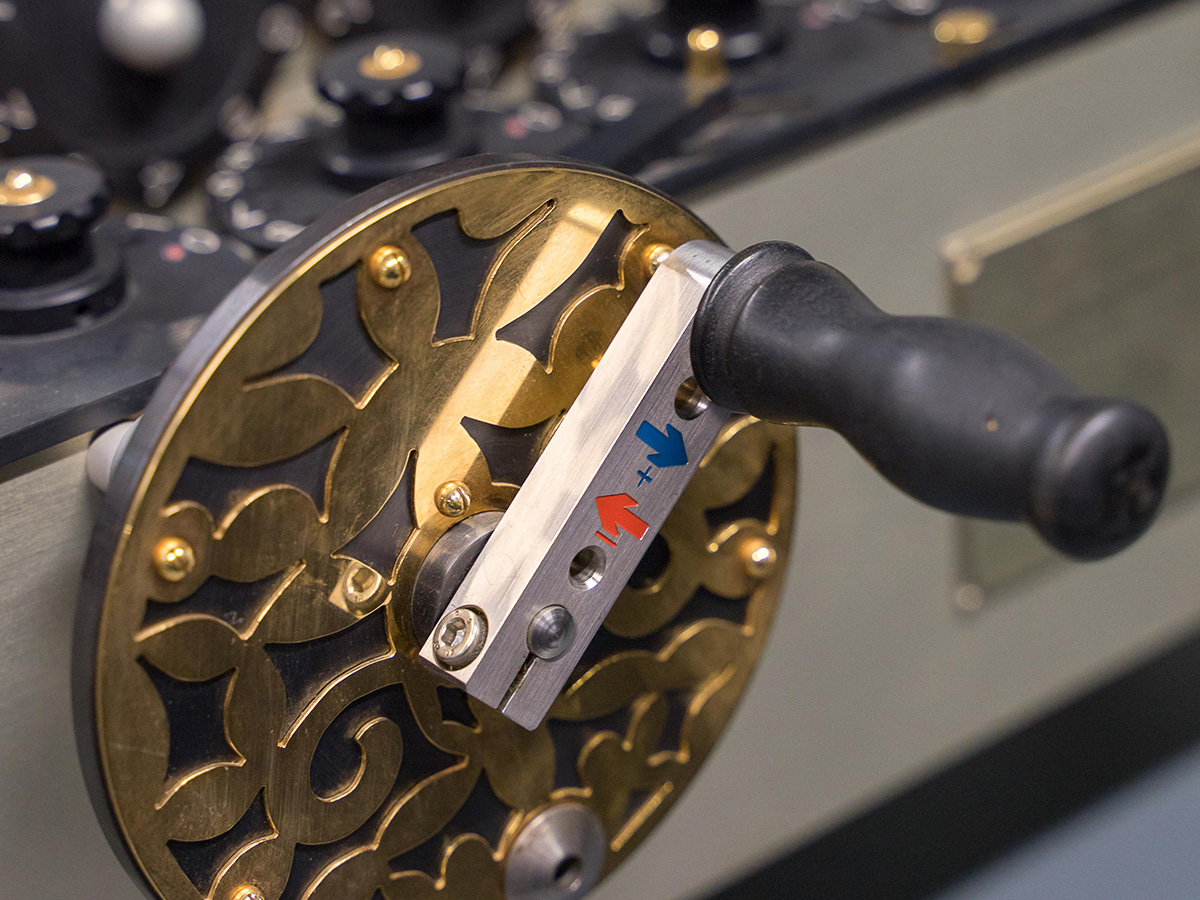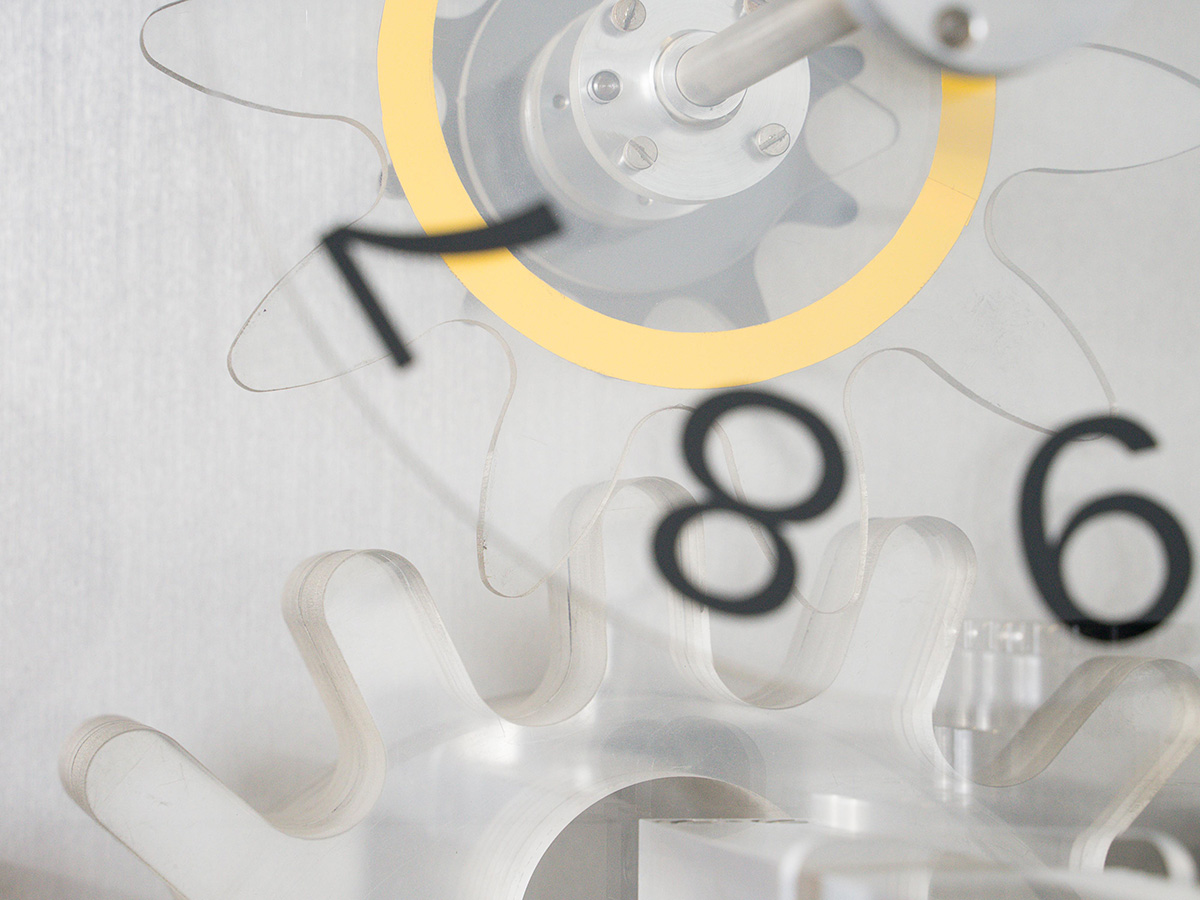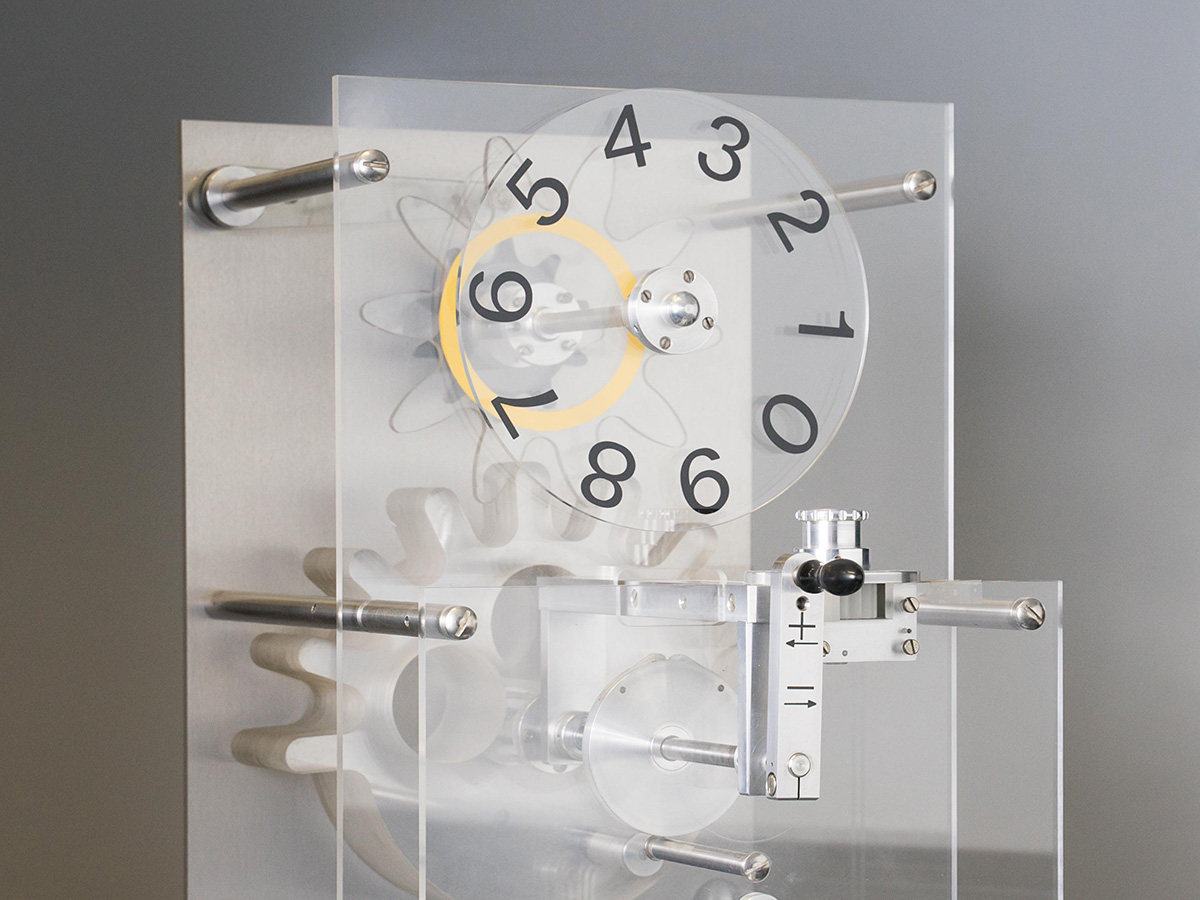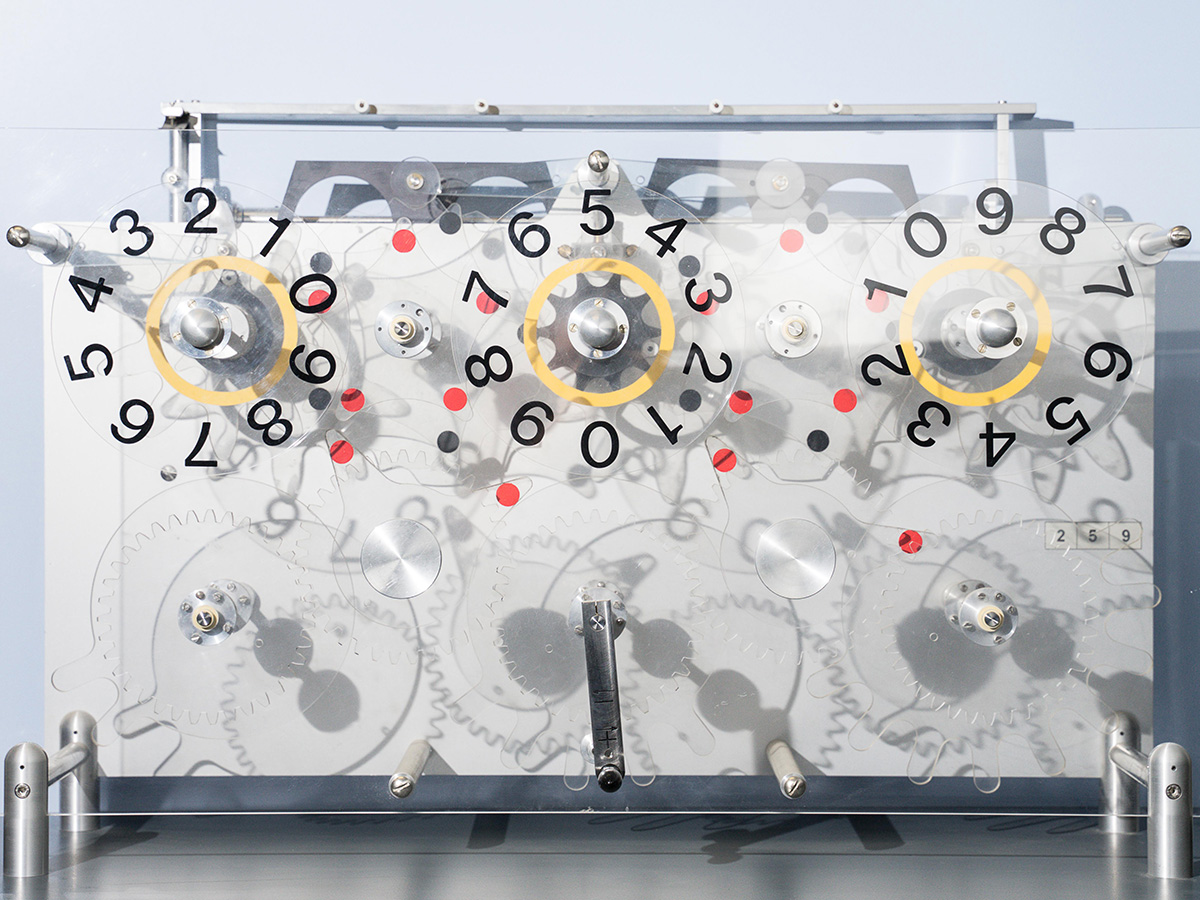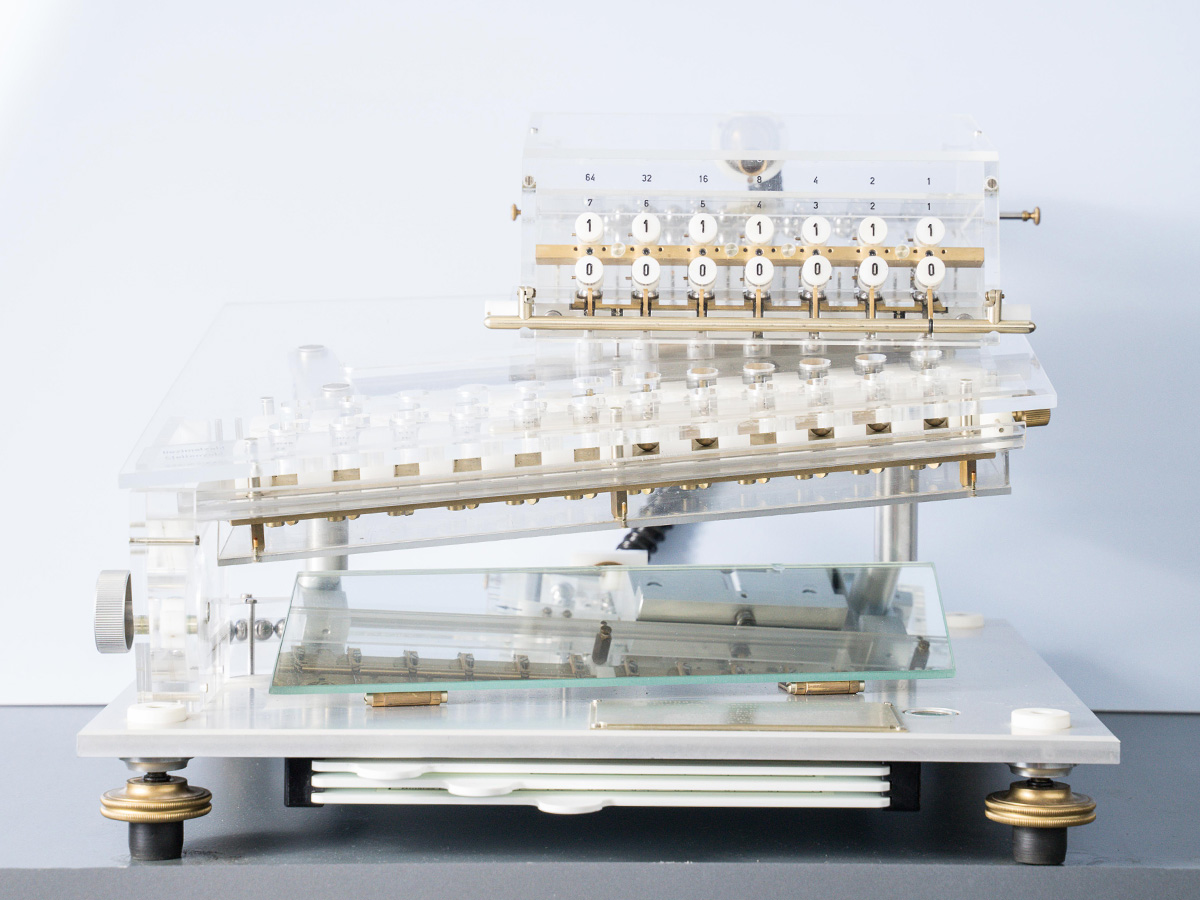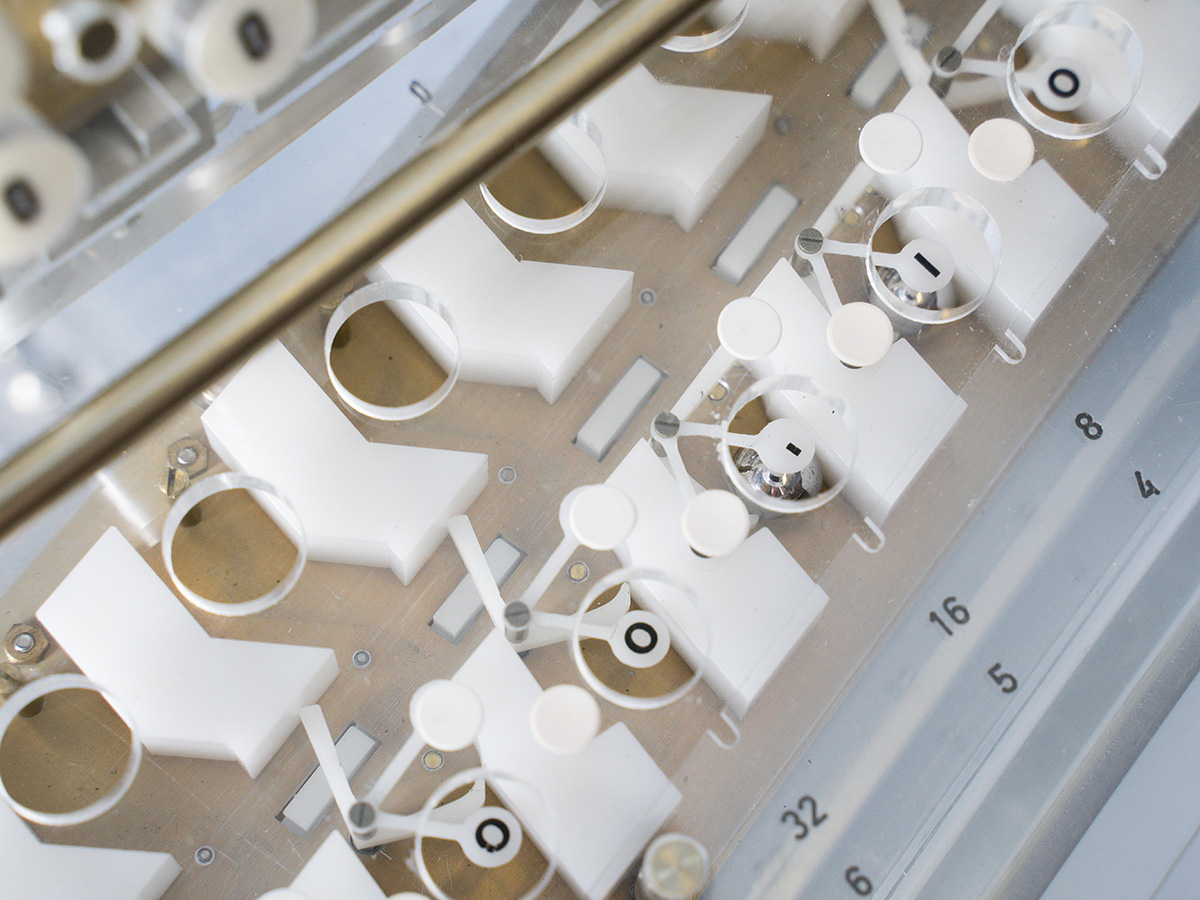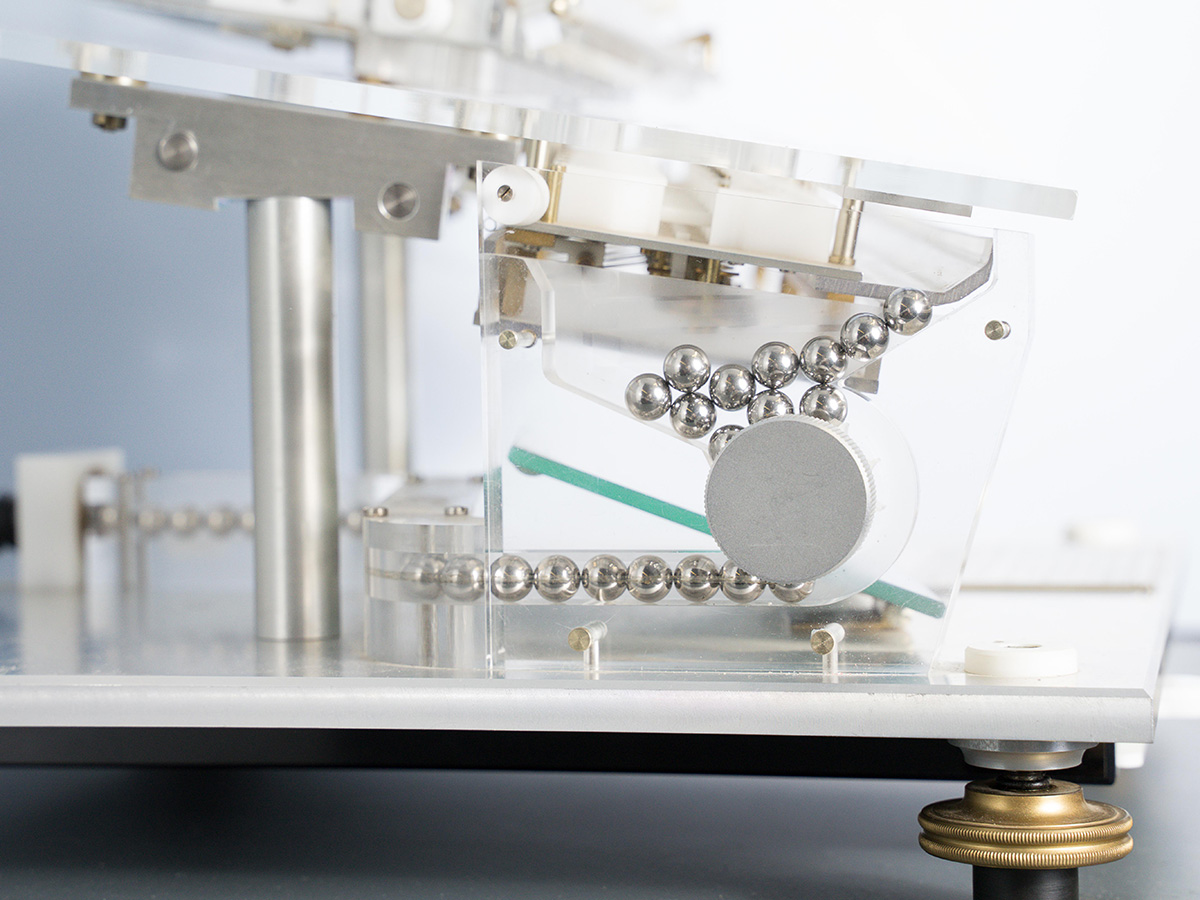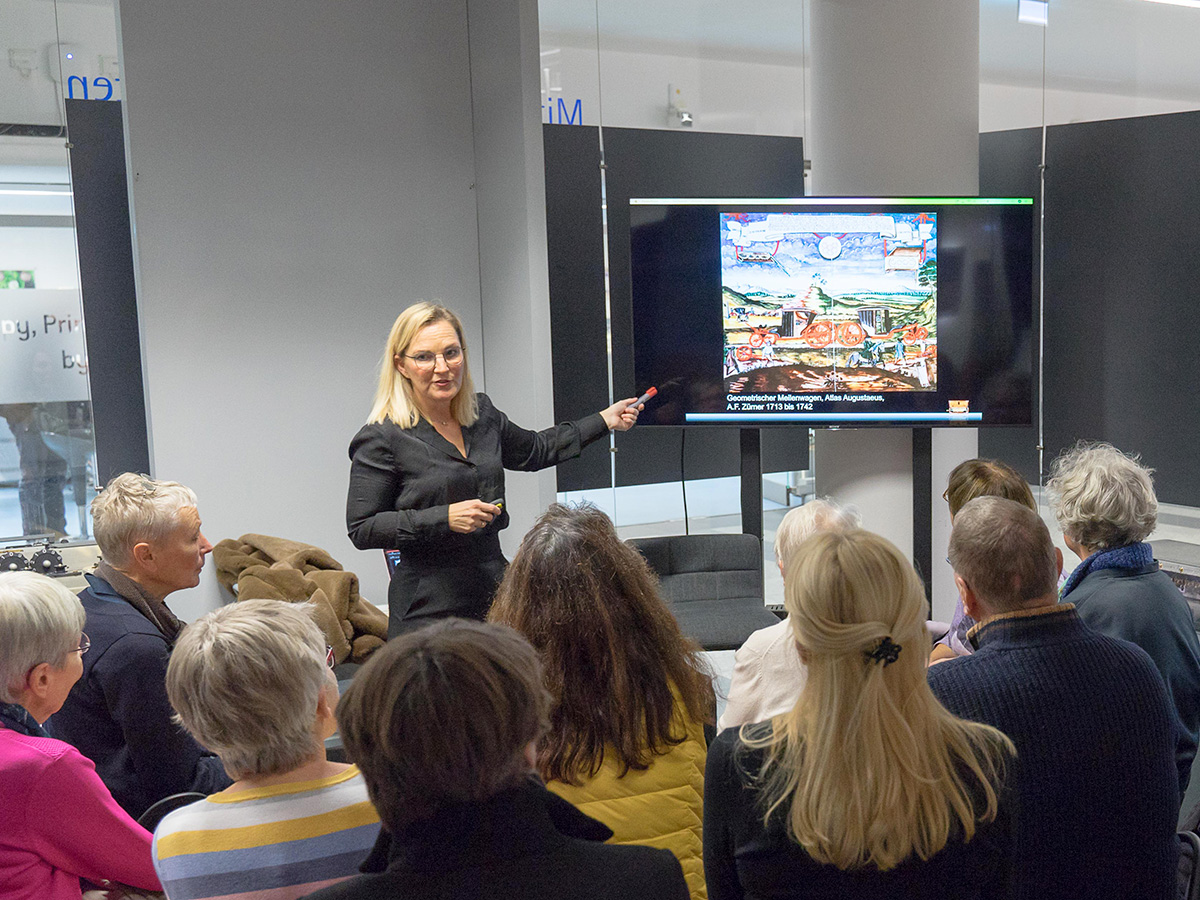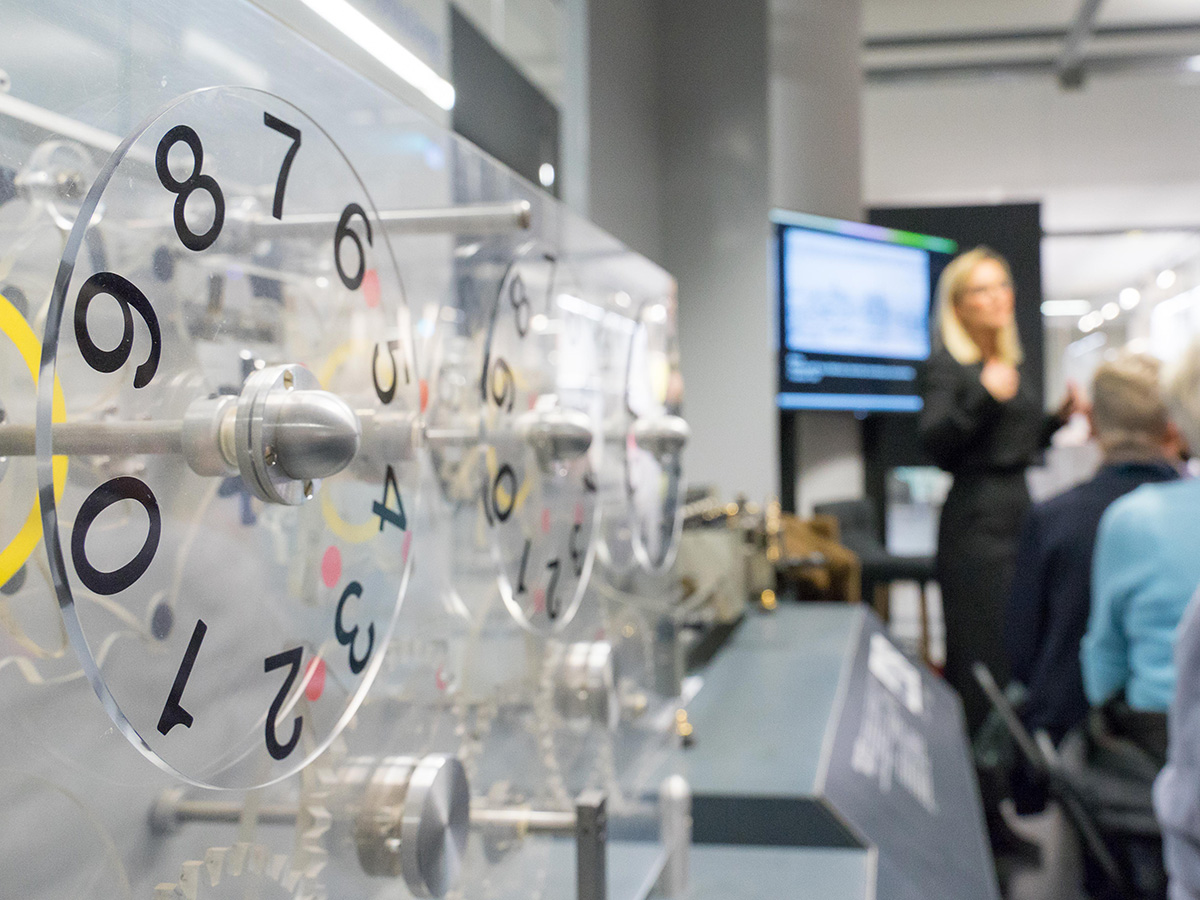Leibniz Exhibition in the Main University Building
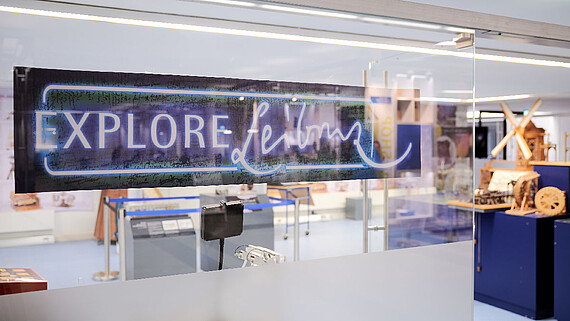
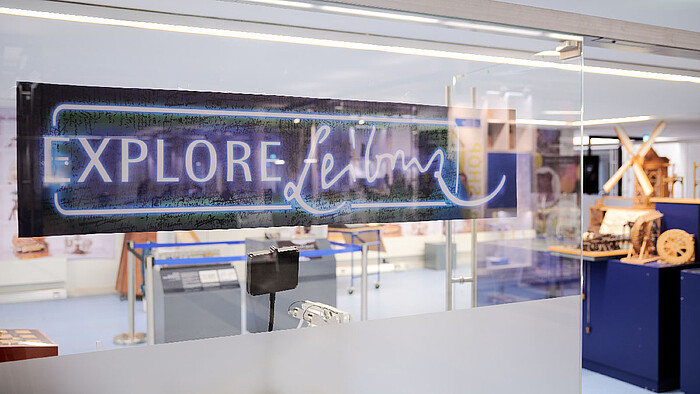
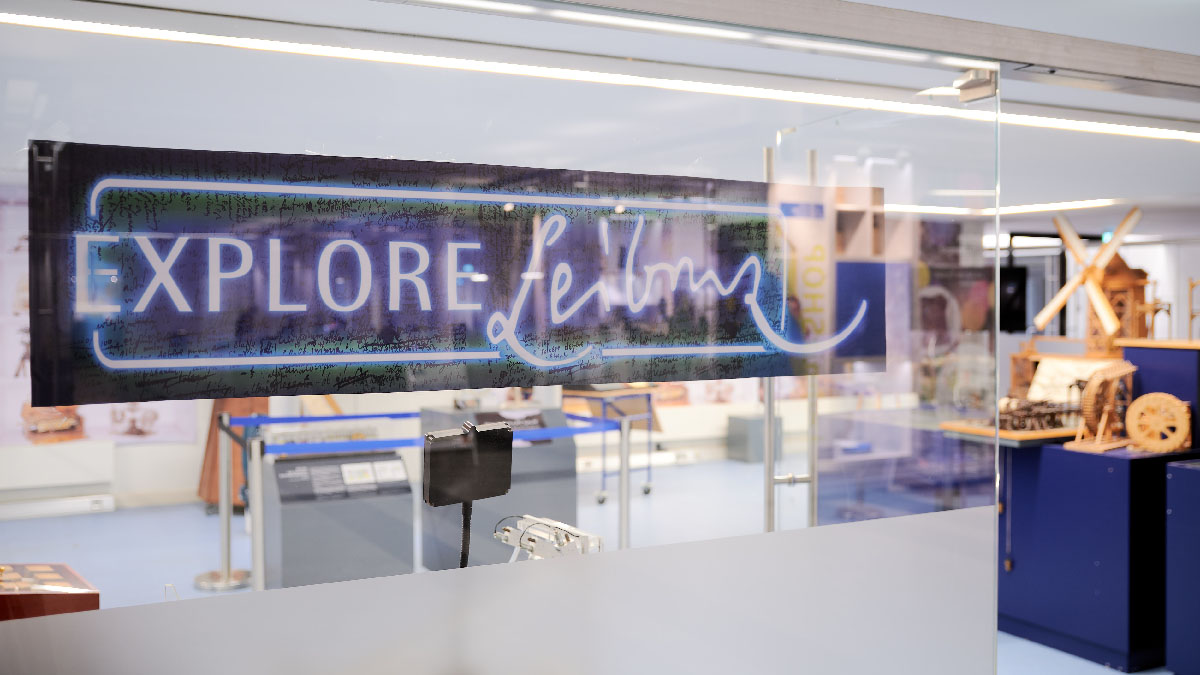 ©
Sören Pinsdorf
©
Sören Pinsdorf
The permanent exhibition in the main university building ("Welfenschloss") is dedicated to the universal scholar Gottfried Wilhelm Leibniz and his work in the context of the early modern period of scientific culture during the 17th century. As a science communication format, the exhibition is managed by Communications and Marketing and promotes the topic both within the university and amongst the public.
The exhibition features a scientific university collection of technical and mathematical models of inventions devised by Gottfried Wilhelm Leibniz. Exhibits include models of the famous four-function calculating machine, the binary calculating machine and the cypher machine, as well as functional models of the stepped drum and the mechanical decimal carry. The models illustrate how "numbers turn into mechanics" and show the extreme efforts that once went into creating a calculating machine consisting of 650 separate parts manufactured by means of "file, hand and eye". Furthermore, the exhibition provides insights into Leibniz's ideas and research in the fields of humanities, law, economics, aesthetics and politics, presented in a series of illustrated tableaux.
The four-function calculating machine – a "living calculating bench"
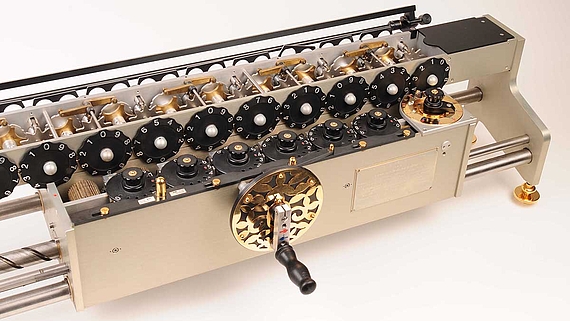
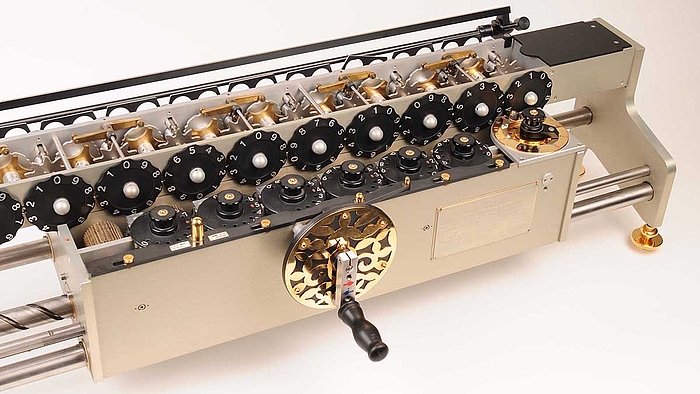
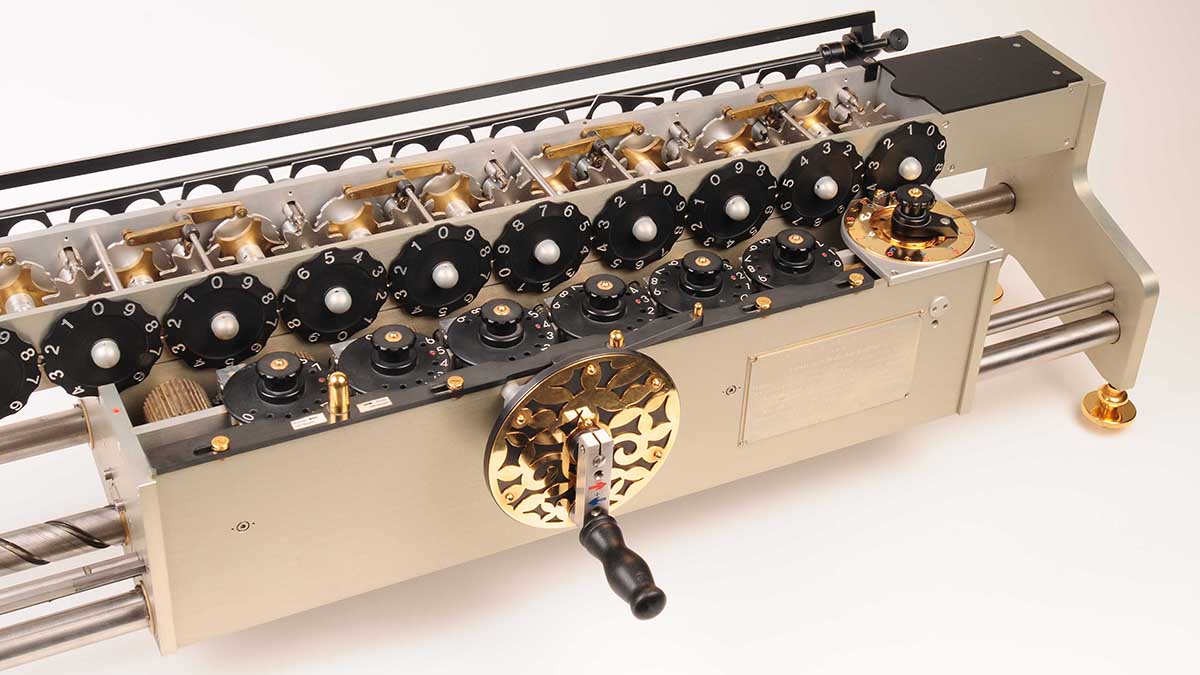 ©
Leibniz Universität Hannover
©
Leibniz Universität Hannover
The only preserved Leibniz calculating machine ("younger machine") with eight setting mechanisms, 16 results mechanisms and one totalling device was constructed from 1690 in Hannover. In the scientific community and in royal circles of the 17th century, Leibniz promoted his machine as a "living calculating bench" on which numbers are calculated automatically. Rounded off in Helmstedt from 1692 and subsequently improved in the Duchy of Saxe-Zeitz, the machine was only returned to Hannover in the summer of 1716, just before Leibniz's death. The only preserved original machine was formerly owned by the Electorate of Hanover. The device has been acquired by the State of Lower Saxony and is now stored by Gottfried Wilhelm Leibniz Library. The Leibniz Exhibition at Leibniz University Hannover illustrates the origins and functionality of the machine.
The stepped drum
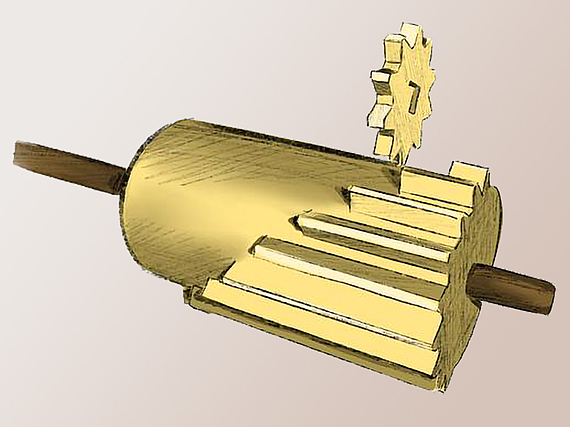
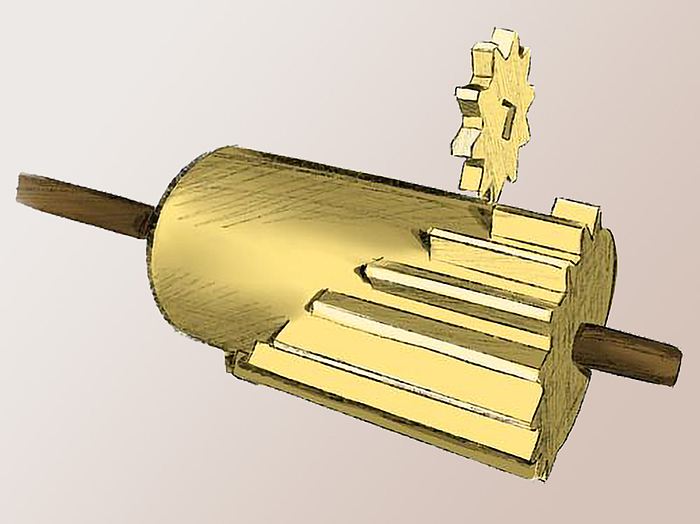
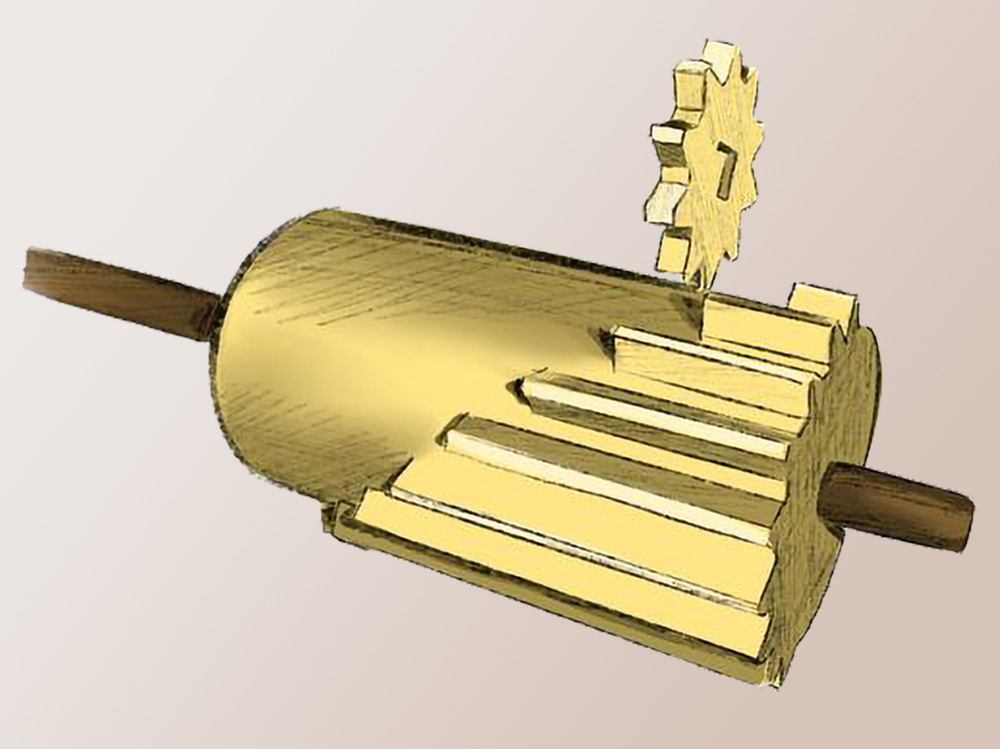 ©
Ava Walsdorf
©
Ava Walsdorf
The stepped drum, a component for entering numbers into a calculating machine, is one of the most innovative and lasting technical devices invented by Leibniz. This cylindrical object features 9 tooth ribs with different stepped lengths corresponding to the numbers 1-9 which were used to enter numbers into the totalling device. One stepped drum for each position in the setting mechanism can be moved parallel to the axis via tooth racks. The set number determined by the length of the cogs is then gripped by a mating gear, entering it into the totalling device. Using this novel machine part presented a great advantage since all numbers could be entered into the totalling device simultaneously, thus enabling the machine to multiply or divide numbers. Inspired by clock technology in Paris, Leibniz devised the stepped drum in 1672. He presented the first wooden model for entering numbers via stepped drums in the Royal Society of London in 1673, as well as in the French Academy of Sciences in 1675.
Forerunner of today’s computer: Machina Aritmethica Dyadica
In 1679, Leibniz applied his ideas on calculating with a binary number system, which he referred to as "dyadics", to the basic functionality of a binary calculating machine. He described the "Machina arithmeticae dyadicae", which solely performed calculations via the numbers 0 and 1, as follows: "A box should be provided with holes such that they can be opened and closed. It should be open at the places which each correspond to 1, and it should stay closed at those places which correspond to 0. Let little cubes or balls fall through the open places into channels, and nothing through the other ones." This mechanism is considered a forerunner of today's binary computers and can perform addition and multiplication via balls descending from the setting carriage into the calculating mechanism, resulting in a binary carry.
The functional replica of Leibniz University Hannover built by Prof. Erwin Stein and Gerhard Weber in 2003/2004 visualises Leibniz's concept and is based on the same logic as the decimal calculating machine.
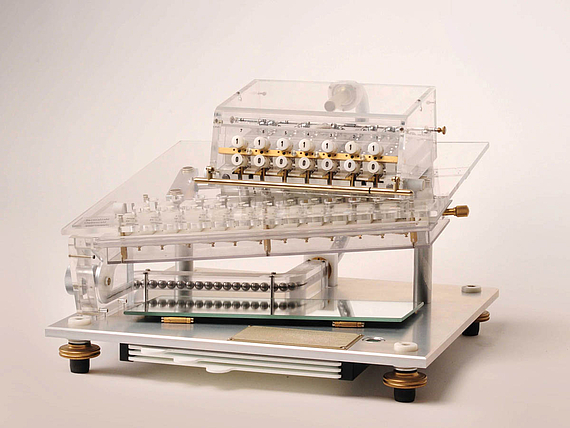
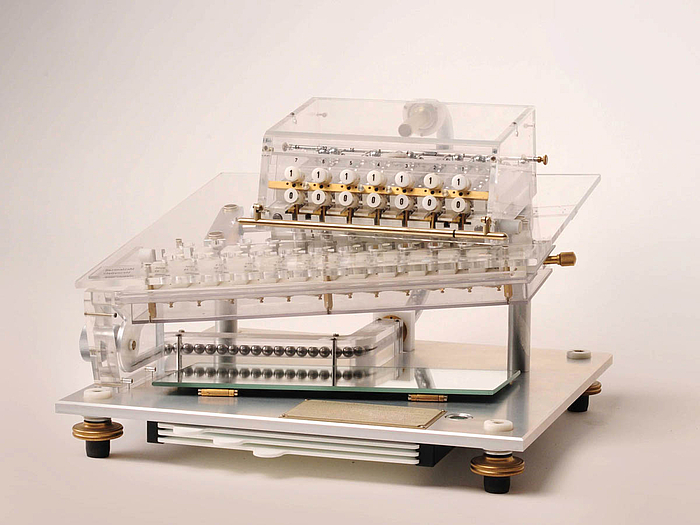
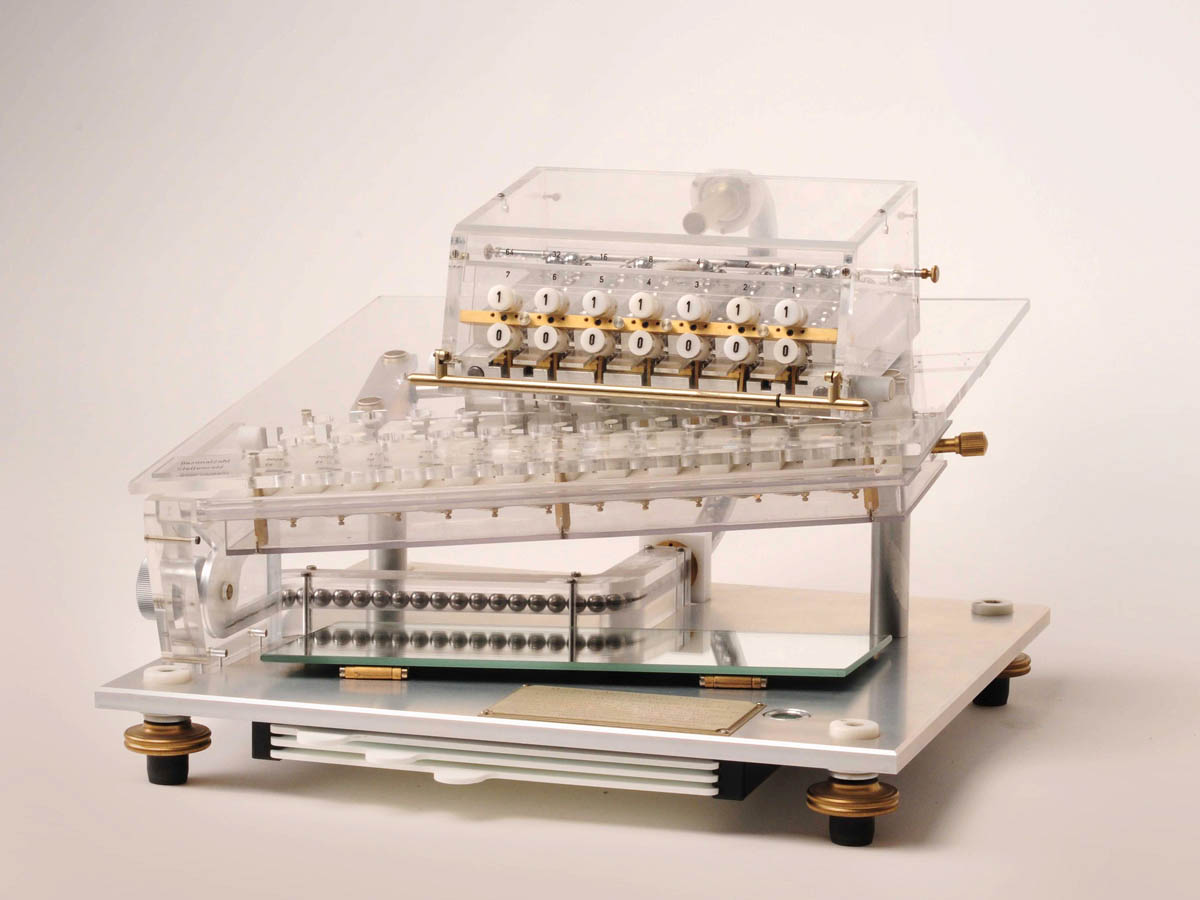 ©
Leibniz Universität Hannover
©
Leibniz Universität Hannover
Encoding secret messages: Machina Deciphratoria
Political advisers and esteemed diplomats like Leibniz were frequently required to guard "secreta domus" - highly sensitive state secrets. Intercepting correspondence or mutual spying in order to obtain privileged information was common practice. Moreover, Leibniz often had to take measures to prevent plagiarism - which came with the territory. In notes prepared for an audience with Emperor Leopold I in 1688 in Vienna, Leibniz proposed building a machine "with which a sovereign can concurrently correspond with different ministries in a cipher".
The letters of a secret message are encoded and decoded via polyalphabetic ciphers using six rows of letters each. Since the stepped drum has six axial positions with 12/10/8/6/4/0 teeth on six gear rims, the device can create 4,320 different ciphers. The machine was built by Klaus Badur and Wolfgang Rottstedt.
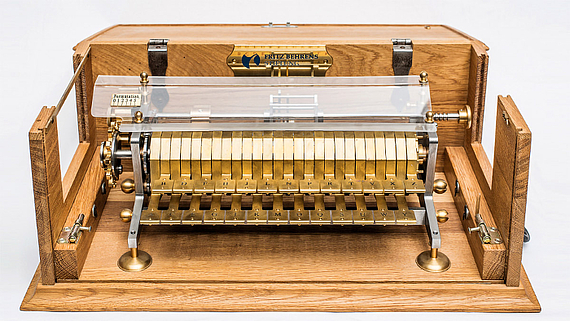
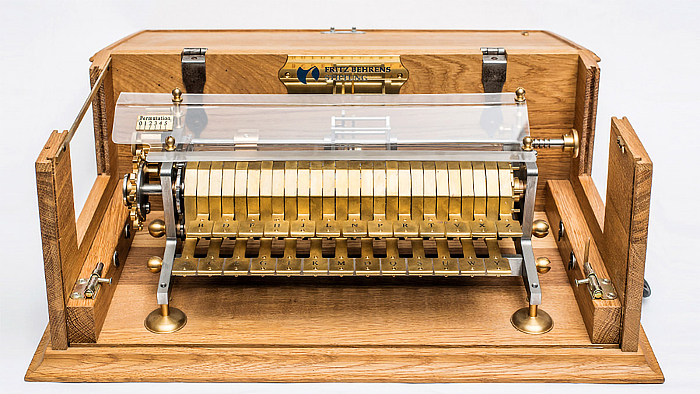
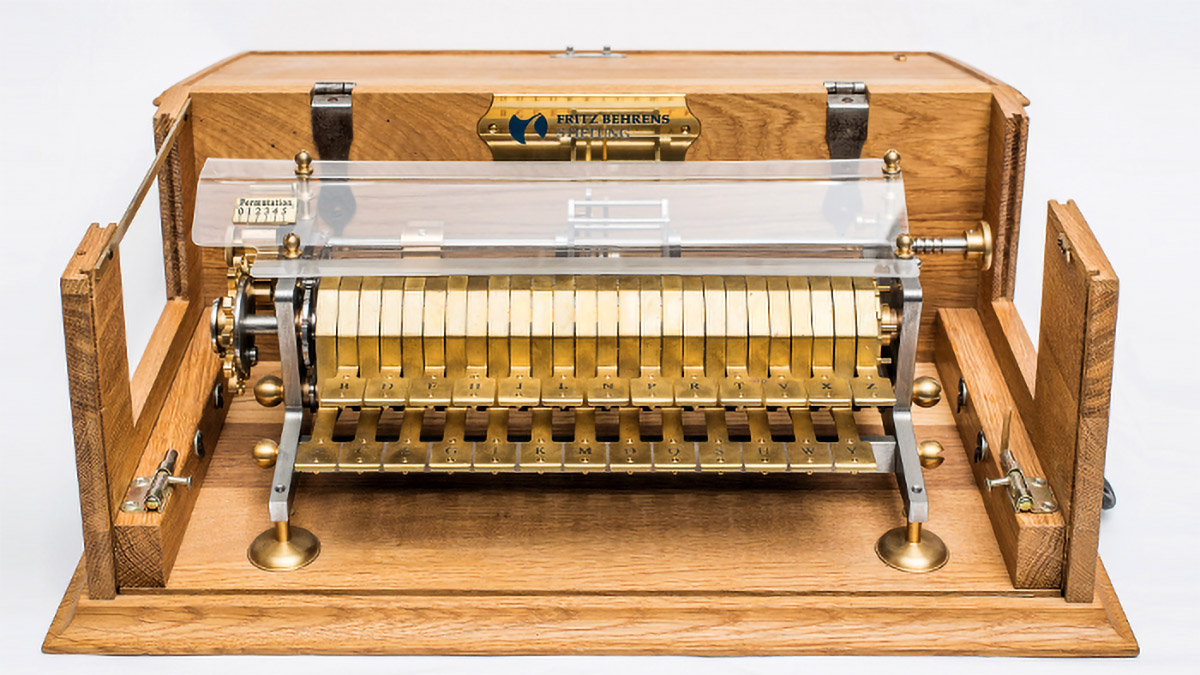 ©
Leibniz Universität Hannover
©
Leibniz Universität Hannover
Further information and contact person in Communications and Marketing
30167 Hannover




